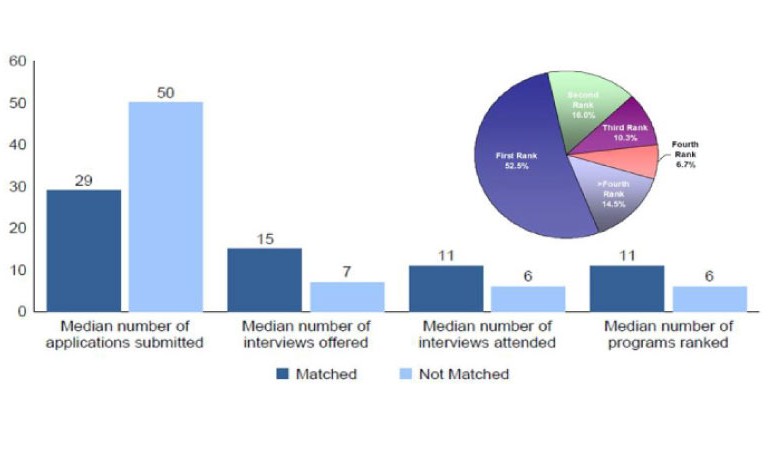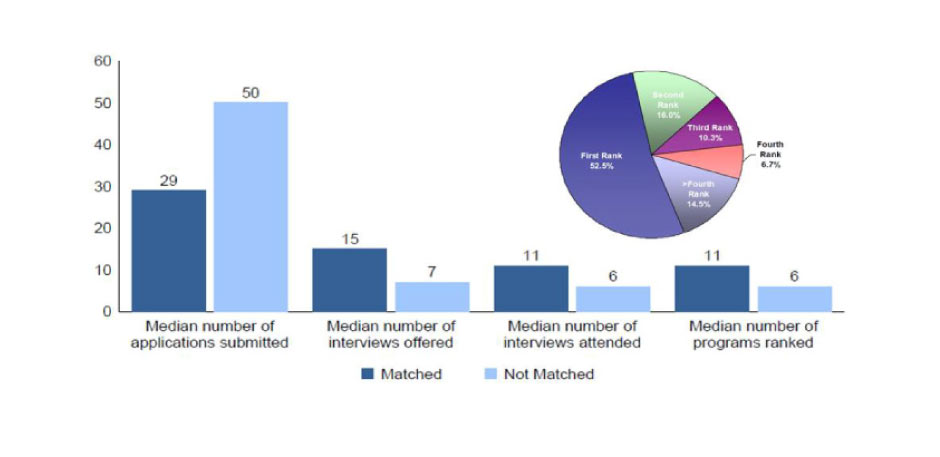Every year, the NRMP releases two reports describing the results of the NRMP residency match. While ophthalmology does not use the NRMP, and instead uses the SF Match system, the data released by the NRMP does provide some insight into this question. (For your information, here are links to the reports: NRMP Match Outcomes and NRMP Applicant Survey). It may be argued, and with logical rationale, that the data from the NRMP survey does not reflect the ophthalmology match due to the greater competition for positions than in other specialties. I believe, however, that taken as a whole, the NRMP data does provide a good surrogate for ophthalmology match outcomes inasmuch as it includes both specialties that are more competitive than ophthalmology and those that are less competitive. The relative competitiveness of ophthalmology lies somewhere in between, though it is considered among the more competitive specialties based on previously published match rates.
In 2013, a survey was sent to 17,504 US Seniors that participated in the 2013 match. Of those, 8696 completed the survey (response rate = 49.7%). Among those that matched and completed the survey, the median number of interviews attended was 11 and among those that did not match the median number was 7. The number of programs ranked was similarly 11 and 7, respectively. It should be noted that the ophthalmology match rate for US seniors in 2011 was 83% based on the SF Match 2011 outcomes (which is no longer available online) but was published in Ophthalmology in 2012. Furthermore, as you might expect, the chance of matching increases with the number of programs ranked, though no additional benefit exists after ranking 11 programs. In 2011, the match rate for applicants ranking 11 programs was >95% (though for those that don’t have 11 interviews, stay optimistic: the probability of matching with as few as six interviews is still 80 percent).
So…how far down your residency rank list will you match?
Based on data from the 2013 NRMP Match Outcomes, 52.5% of matched US Seniors matched at their #1 program, 16.0% matched at their #2 program, 10.3% at their #3 program, and 6.7% at their #4 program. The remaining 14.5% matched at a program outside of their top 4 programs.
The bottom line is this: assuming that you #1 – are a US Senior, you #2 – match, and that you #3 – rank 11 programs, you have approximately a 52.5% chance of matching at your #1 program, a 68.5% chance of matching in your top 2, a 78.8% chance of matching in your top 3, and an 85.5% chance of matching in one of your top 4 programs.












